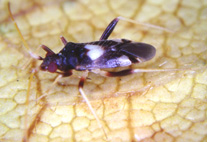Abstract
We present an assessment of the systematic status of populations currently assigned to Eremiascincus fasciolatus across Australia using morphological data. Our analyses show that these populations actually comprise four species: a large and robust, narrow-banded taxon from eastern Queensland and three slender, desert-dwelling taxa from the western, northern, and south-eastern Australian arid zone respectively. These data necessitate: 1) the redescription of E. fasciolatus, a species endemic to the dry forests of eastern Queensland, 2) the resurrection of E. pallidus for the western taxon, 3) the resurrection of E. intermedius for the northern taxon, and 4) the description of the south-eastern desert-dwelling taxon, which largely occurs in the Lake Eyre Basin, as a new species. The new species, Eremiascincus phantasmus sp. nov., can be distinguished from congeners by its large size, pale color, depressed snout, and small circular ear opening, as well as by several scale characteristics. Body proportions, a depressed snout, small ear opening, and pale color suggest that this species is fossorial and predominantly occurs in habitats with loose substrate, such as dune systems and sandy plains. A synopsis of each species and a key to the narrow-banded species of Eremiascincus are provided.

